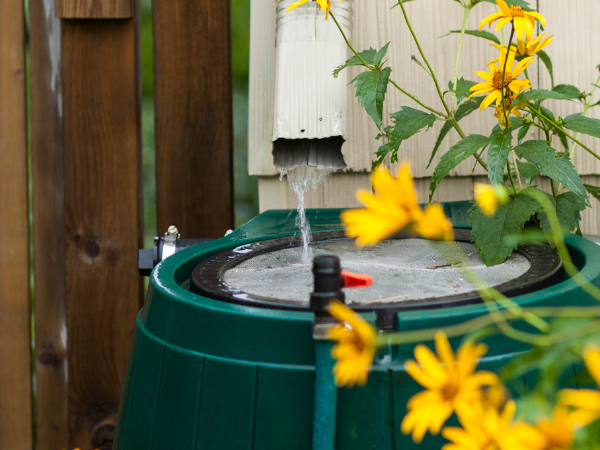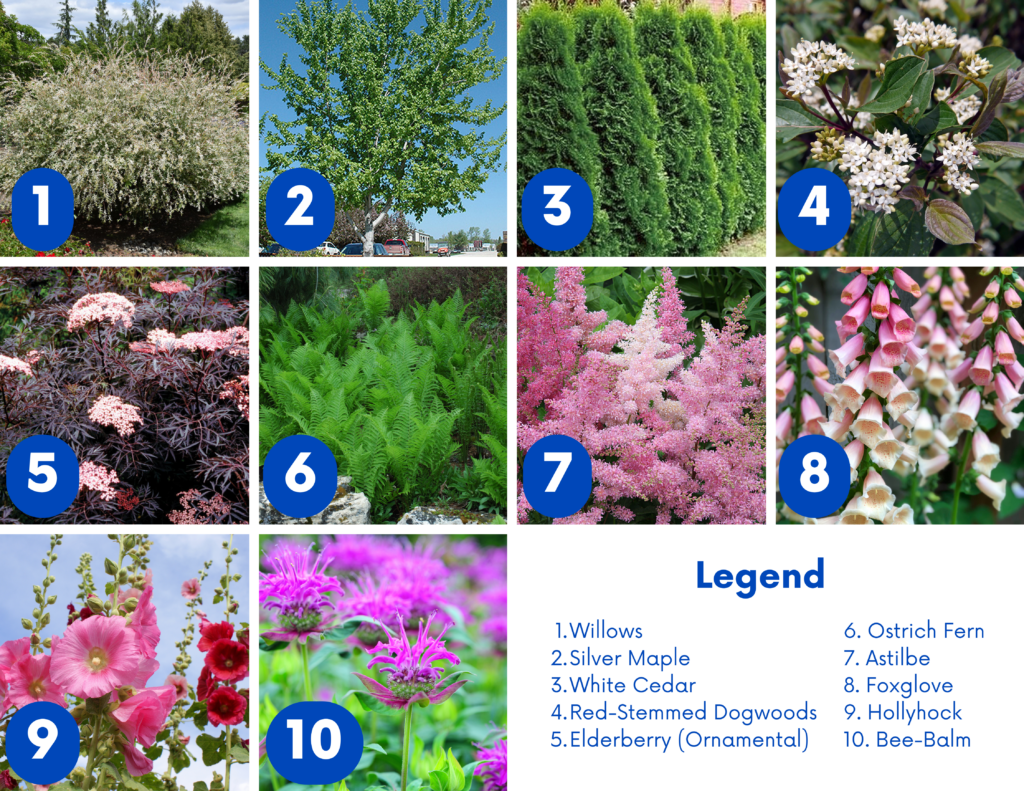
Moisture Tolerant Plants
Discover our top 10 moisture-tolerant plants that thrive in moisture-laden gardens and transform soggy spots into lush, vibrant landscapes:
- Willows
Willows are renowned for their love of water. These trees thrive in wet conditions and help stabilize soil, preventing erosion. Their graceful, drooping branches add a serene, picturesque quality to any garden. - Silver Maple
Silver Maples grow rapidly and are excellent for wet areas. Their strong roots can help soak up excess water, and their silver undersides provide a shimmering effect when the wind blows. - White Cedar
White Cedar, or Arborvitae, is a versatile evergreen that handles moist conditions well. Its dense foliage makes it perfect for creating privacy screens or windbreaks in your garden. - Red-Stemmed Dogwoods
These shrubs are moisture-tolerant and add year-round interest with their vibrant red stems, especially in winter. They work well as border plants and can help manage wet areas effectively. - Elderberry (Ornamental)
Ornamental Elderberries thrive in damp conditions and produce clusters of small, fragrant flowers followed by dark, edible berries. They attract birds and pollinators, enhancing the biodiversity of your garden. - Ostrich Fern
Ostrich Ferns are perfect for shaded, wet spots in your garden. Their tall, feathery fronds create a lush, tropical feel and are excellent for adding texture to your landscape. - Astilbe
Astilbe plants are beloved for their feathery plumes of flowers and tolerance to wet conditions. They come in various colours and add a splash of brightness to shady, moist areas. - Foxglove
Foxgloves thrive in moist soil and partial shade, producing tall spikes of bell-shaped flowers that add vertical interest and a cottage-garden charm to your landscape. - Hollyhock
Hollyhocks are classic garden favourites that tolerate wet soil well. Their towering stalks of vibrant flowers are perfect for the back of garden beds or along fences. - Bee-Balm
Bee-Balm, also known as Monarda, is a magnet for pollinators. It thrives in damp conditions and produces bright, tubular flowers that add a pop of colour and a sweet fragrance to your garden.

Tips for Improving Drainage in Your Garden
While these plants are excellent for moisture-prone areas, it’s still beneficial to improve drainage to prevent root rot and other issues. Here are some ways to help create better drainage:
- Add Organic Matter
Incorporate organic matter such as compost, peat moss, or well-rotted manure into your soil. These materials improve soil structure, allowing it to drain excess water while retaining moisture. - Create Raised Beds
Building raised beds can significantly improve drainage. Elevated soil levels allow water to flow away from plant roots, reducing the risk of waterlogging. - Install French Drains
French drains are gravel-filled trenches and perforated pipes that redirect water away from problem areas. They are an effective solution for severe drainage issues. - Mulch Appropriately
Use mulch to help regulate soil moisture. Organic mulches, such as wood chips or straw, allow water to penetrate but also help retain necessary moisture and prevent erosion. - Aerate the Soil
Aerating your soil manually or with a mechanical aerator can improve its structure and drainage capacity. This process involves creating small holes in the soil to allow air, water, and nutrients to penetrate deeper.
By choosing moisture-tolerant plants and implementing effective drainage solutions, you can transform your damp garden into a thriving, beautiful oasis. Embrace these resilient plants and enjoy a lush landscape regardless of the excess water.
